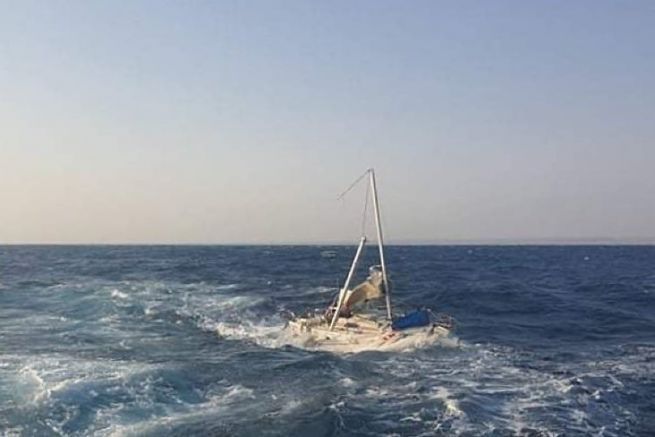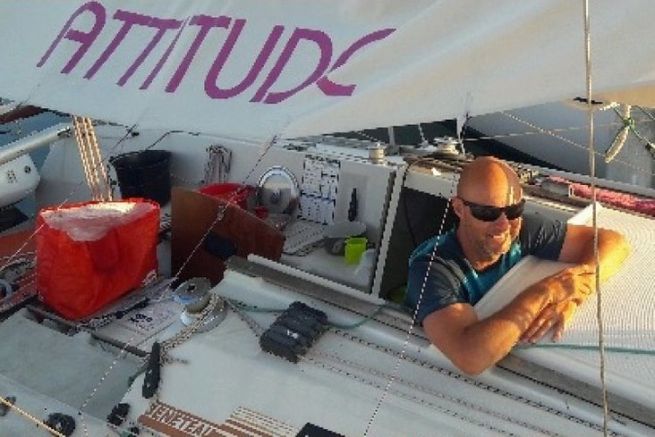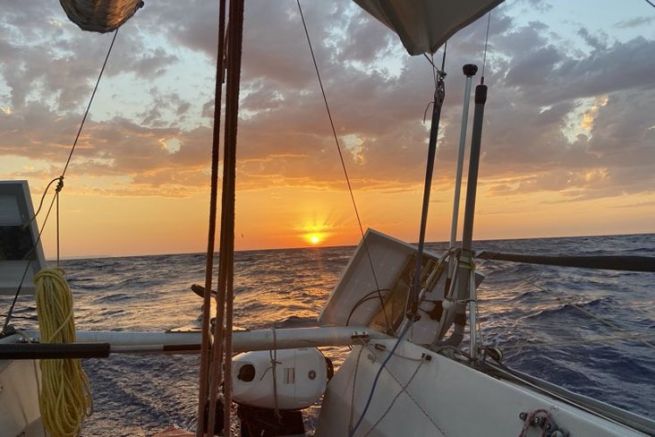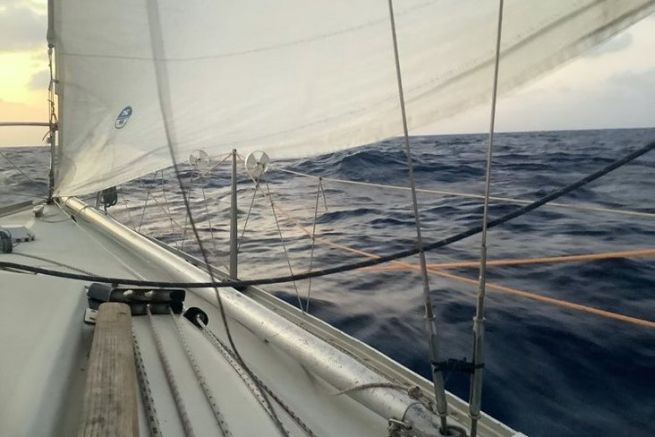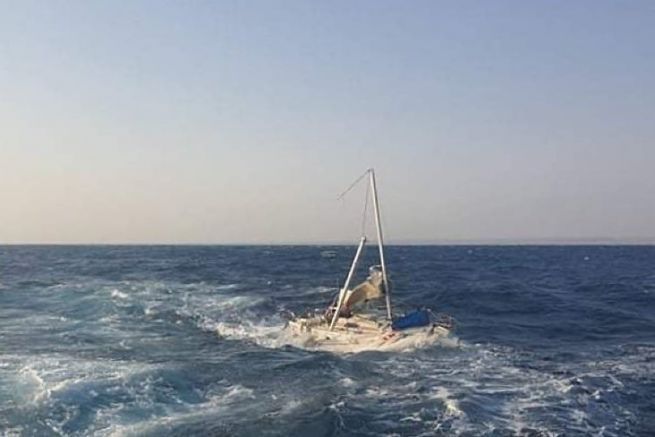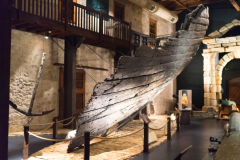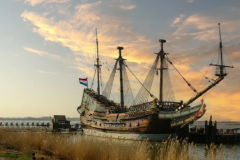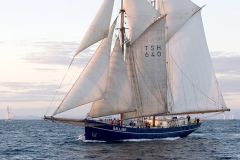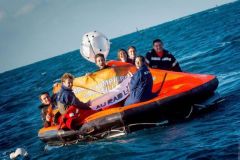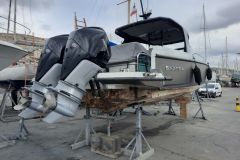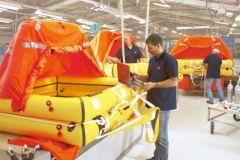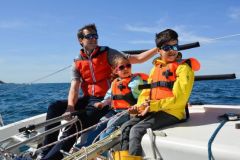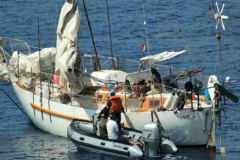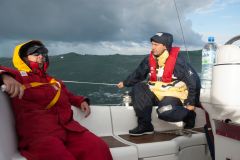Marc has just lost his First Class 8 in the waters of the Gulf of Suez. On 23 September 2020 at sunrise, it was collected by the Egyptian Navy. He explains to us the mistakes that he believes led him into this situation.
Find at the end of the article videos shot in the heart of the storm as well as the last images of the First Class 8 before it sank..
Too much self-confidence
Marc left Fos-sur-Mer at the beginning of July, almost 3 months ago. From France, he reached the entrance to the Suez Canal (Port-Saïd) with windy sailing, always downwind. He has therefore got into the habit of sailing with 15 knots of wind, under genoa alone. The autopilot manages the situation very well, leaving the solo sailor to feed and rest.
Too much confidence in the weather
When she left Suez, the weather forecast was for a nice week at 8-10 knots during the day with a strengthening in the evening. Exactly the conditions in which the sailor and his boat are at ease. When the wind freshened in the evening, Marc didn't think it would be useful to lower the genoa to replace it with a small jib. Confident in the forecasts and not seeing any signs of change, he didn't imagine that the wind could strengthen so much.
It is only when he feels the spray crashing down on his neck and when the waves crashing down fill the open cockpit of the Class 8 that Marc will understand that the wind is well in excess of the 20 knots predicted. But by then it is too late to go to the front of the boat and lower the jib. Its weight would then risk sanctifying the little boat..
Accumulated fatigue
In the week before, since Mark arrived in Egypt, he hasn't been able to get a good night's sleep. Indeed, the "marinas" are designed to accommodate large cargo ships, but not frail sailing boats. Throughout the nights, Marc will have to manage the mooring lines and fenders so that his boat doesn't crash on the concrete docks.
When he cast off from Suez on September 22nd, he left very tired. Alas, the weather conditions and the navigation in the middle of cargo ships and fishermen will not allow him to rest.
Great confidence in AIS
For this voyage, Marc equipped his First Class 8 with an AIS transponder. This sends the position of the yacht to the surrounding boats, but above all it picks up the AIS of the other boats so that Marc can avoid them. In this part of the Gulf of Suez, which is congested with heavy traffic, Marc will realise that not all vessels are sailing with their AIS on. In particular cargo ships at anchor or some fishing boats. By day he can easily see them and avoid them, but at night? All the safety Marc had relied on for navigation collapses in one fell swoop. Only a radar could detect another ship at night. But the Class 8 is not equipped with one.
Poor knowledge of the area
After discussion with the locals, this kind of gale in this area is quite common. If he had had the time to find out before leaving Suez in haste, Marc would have known that in this weather situation the wind would be increasing for several days. Likewise, Marc has tightened his grip on the west coast, naturally staying to the right of the channel, in the same direction of circulation as the cargo ships. However, in the Gulf of Suez, it is preferable to stay close to the east coast. The wind is less strong there, as it is not accelerated by the relief or on every course. And the sea is actually less choppy.
